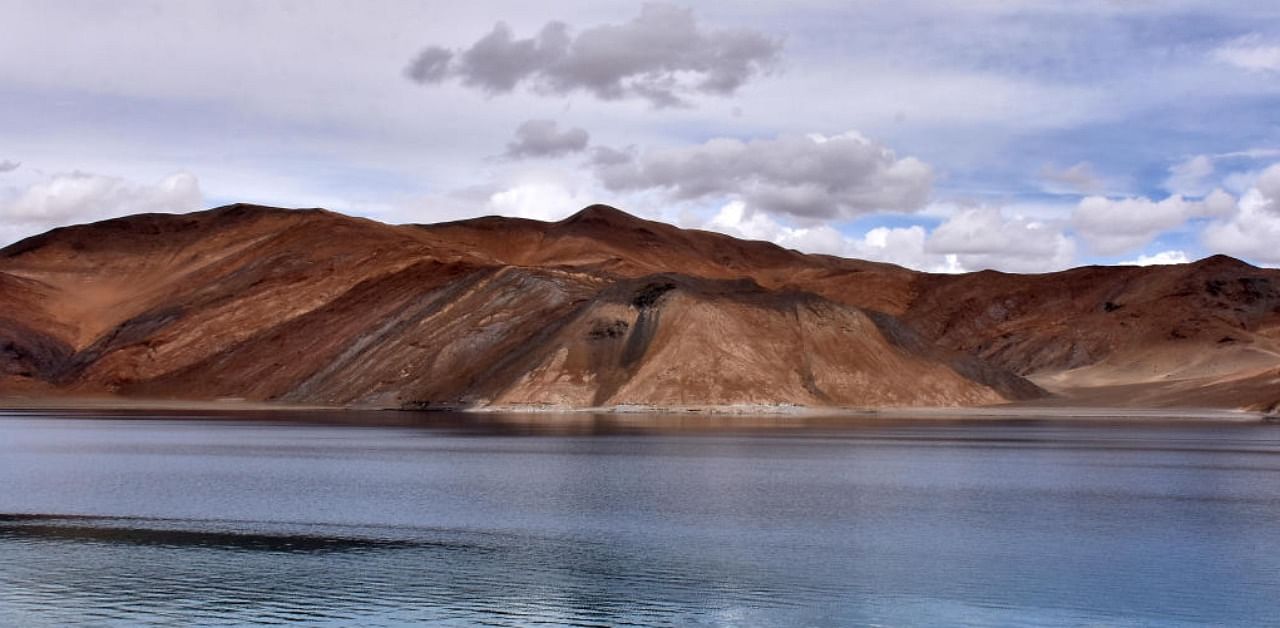
With China’s People’s Liberation Army (PLA) fortifying its positions in India’s territory it recently transgressed into on the northern bank of the Pangong Tso (lake), Beijing has signalled its reluctance to even acknowledge the area as a face-off scene and a subject of dispute to be resolved through discussion with New Delhi.
The Chinese PLA thinned out troops from the “Finger 4” on the northern bank of the Pangong Tso early last month after it agreed with the Indian Army to withdraw front-line troops from the scenes of the face-off along the disputed boundary between the two nations in eastern Ladakh. It, however, did not restore the status quo ante and held on to the area between “Finger 5” and “Finger 8” – an eight-kilometre-long stretch it took over after the stand-off with the Indian Amy started in early May.
The PLA rather brought in more troops, built bunkers and observation posts, dug trenches, pitched tents and set up new prefabricated huts to accommodate additional soldiers, apart from deploying its navy unit with more speed-boats for patrolling on the lake, a source told DH on Sunday.
The Chinese Army not only fortified its position in the entire stretch from “Finger 5” to “Finger 8”, but also occupied the ridgeline overlooking the “fingers” – thus effectively controlling an area of nearly 30 sq. km, denying access to the Indian Army to places it regularly patrolled before the stand-off started three months ago.
That China dug in its heels in the ‘finger’ areas on the bank of the Pangong Tso was evident when its envoy to India, Sun Weidong, recently asserted the communist country’s claim on the entire stretch. “On the northern bank of Pangong Lake, China's traditional customary boundary line is in accordance with the LAC. There is no such (thing) as China expanded its territorial claim,” Sun said, while responding to a question during a webinar hosted by Institute of Chinese Studies in New Delhi.
The spurs of the mountain range on the northern bank of the Pangong Tso jut towards the lake like a palm with the protrusions looking like fingers. They are in fact demarcated on the maps as ‘Fingers’, with the “Finger 1” at the end and the “Finger 8” at the eastern end. China claims that the LAC, after cutting through the Pangong Tso, goes through the “Finger 4”. India, on the other hand, claims that the line goes through the “Finger 8”.
The soldiers of the Indian Army and the Chinese PLA had a scuffle in “Finger 4” area on May 5. The PLA later built bunkers and observation posts and deployed additional troops in the area, thus denying access to the Indian Army to its earlier patrolling limit – the “Finger 8”. The Indian Army too deployed additional troops in response to the PLA build-up and the stand-off started.
After the Chinese PLA pulled back its troops from the scene of the June 15 clash at Galwan Valley early last month, the Indian Army too withdrew troops 1.5 kilometres away from the spot, in keeping with the disengagement understanding reached between the senior military officials of the two nations to resolve the stand-off. The two sides also withdrew troops from Hot Springs and some other face-off scenes. The process, however, stalled since middle of the last month, primarily due to the PLA’s reluctance to completely pull back troops from the north bank of the Pangong Tso, Depsang 'Y' junction and Gogra Post.
